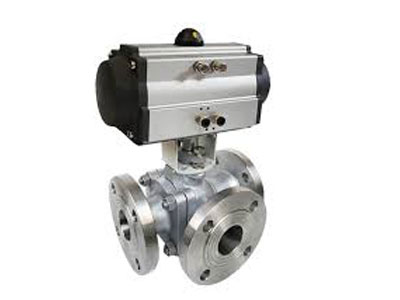Key Takeaway
The control signal for a proportional valve is typically an analog signal, such as a 4-20 mA current loop or a 0-10 V voltage signal. This signal modulates the valve’s position, allowing for precise control of flow rate or pressure. The analog nature of the signal enables smooth and continuous adjustments, making proportional valves ideal for applications requiring fine control.
In some advanced systems, digital signals or fieldbus communication protocols may be used to control proportional valves. These systems offer enhanced control capabilities and integration with modern automation systems, providing real-time feedback and diagnostics.
Understanding Control Signals in Proportional Valves
Control signals in proportional valves typically consist of standardized electrical inputs, commonly ranging from 0-10V or 4-20mA. These signals provide precise control over the valve’s position, allowing for accurate adjustment of flow or pressure. The signal type is chosen based on system requirements and environmental conditions.
The relationship between the control signal and valve response can be customized through calibration and configuration. This allows for optimization of valve performance for specific applications, ensuring accurate and reliable control. Modern valves often include digital interfaces for enhanced control capabilities.
Signal processing within the valve’s control electronics ensures smooth and stable operation. Advanced features such as signal filtering, ramping, and feedback control help maintain precise valve positioning and compensate for external disturbances, ensuring consistent performance.

Types of Control Signals Used
Pressure relief valves (PRVs) are operated by different types of control signals, which determine how the valve responds to changes in system pressure. The most common control signal is pressure-based, where the valve is set to open when the system pressure exceeds a specific threshold. This mechanism is either mechanical, using a spring-loaded design, or pneumatic/hydraulic, such as in pilot-operated PRVs, where a separate pilot valve is used to regulate the valve’s opening. Pressure-based control signals are reliable and widely used in many standard applications.
In modern systems, electronic control signals have become increasingly popular. These are integrated into advanced PRVs that use sensors and controllers to monitor real-time pressure. The electronic signals enable precise adjustments to the valve’s operation, which is particularly useful in industries that require tight pressure control, such as chemical or gas processing. These electronic PRVs can be connected to automated systems, enabling remote monitoring and adjustment, which enhances system efficiency and safety.
Some systems may use a combination of pressure, temperature, and flow-based control signals for more complex pressure regulation. This is typical in multi-parameter systems where temperature fluctuations or high-flow conditions could affect valve performance. Multi-signal PRVs provide more comprehensive system protection by adjusting the valve’s operation based on multiple factors, ensuring both safety and efficiency in a wide range of industrial applications.
You May Like to Read
How Control Signals Affect Valve Performance
The quality and accuracy of control signals directly impact the performance of proportional valves. Poorly calibrated signals can cause erratic valve behavior, leading to inefficiencies or even system failures.
For instance, fluctuating voltage signals can result in inconsistent flow rates, while incorrect current settings might limit the valve’s operational range. Similarly, noisy signals can confuse the valve’s actuator, reducing its ability to respond accurately.
On the other hand, well-regulated control signals ensure smooth transitions in valve operation, minimizing wear and tear. This not only enhances system efficiency but also extends the valve’s lifespan. Engineers must therefore prioritize signal integrity and calibration to maintain optimal valve performance.
Setting Up Control Signals for Optimal Operation
Setting up control signals involves a series of steps to ensure compatibility and efficiency:
1. Signal Calibration: Ensure the control signal range matches the valve’s specifications (e.g., 0-10V for full opening).
2. Connection Testing: Verify the wiring between the signal source and the valve to prevent interruptions.
3. System Integration: Integrate control signals with feedback systems for real-time adjustments.
4. Fine-Tuning: Adjust signal parameters to align with system demands, ensuring smooth operation.
Using diagnostic tools like multimeters and oscilloscopes can help engineers monitor signal quality during setup. Proper installation and calibration significantly enhance the valve’s response time and accuracy.
Troubleshooting Control Signal Issues
Control signal issues can disrupt system operations, making troubleshooting essential. Common problems include:
Signal Noise: Interference can distort signals, causing erratic valve behavior. Shielded cables and filters help mitigate this.
Voltage Drops: Long-distance signal transmission may weaken voltage signals. Using current signals (4-20mA) can solve this issue.
Calibration Errors: Misaligned signal ranges result in improper valve responses. Recalibrating the signal source fixes this.
Controller Malfunctions: Faulty controllers may send incorrect signals. Testing with an alternate source can isolate this problem.
Regular maintenance, coupled with prompt troubleshooting, ensures the reliability of control signals, maintaining seamless valve operation.
Conclusion
The control signal of a proportional valve is a critical component that dictates its operation. Typically, these signals are electrical, ranging from 0-10V or 4-20mA, allowing for precise modulation of the valve’s position and flow rate.
Understanding the control signal requirements is essential for integrating proportional valves into automated systems. This knowledge ensures compatibility with control systems and optimizes the valve’s performance, leading to improved efficiency and reliability in fluid control applications.
